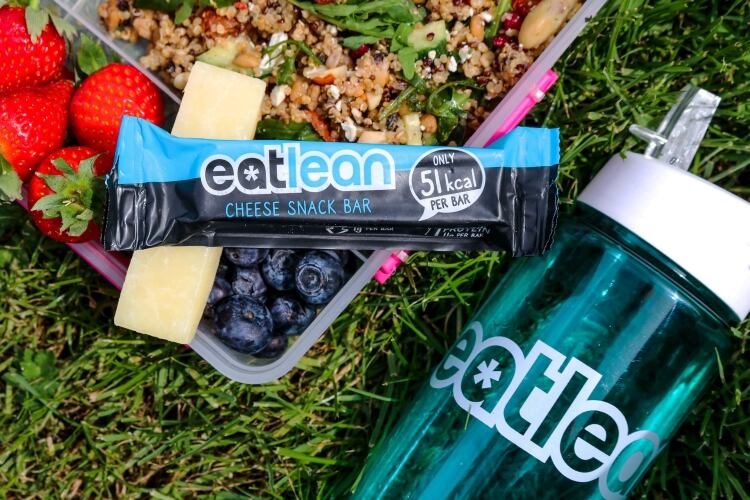Andrew Steele argues in his newly-published book, Ageless, “that aging was the single most important scientific challenge of our time,” turning his academic focus from a Ph.D. in physics to biogerontology.
Genetics, Steele said, is responsible for 5 to 25% of how long people live. The rest is determined by lifestyle and luck.
This may go some way to explaining why more people are looking to food sources to boost their nutritional needs and maintain a so-called healthy lifestyle.
For many nutritionists, real food should come first, regardless of what the nutritional goals might be.
“The basics of a sports-performance based diet is not vastly different to that of anyone else’s basic needs,” said sports nutritionist Ben Coomber.
“Ensure that the majority of the food you eat is of a good quality. Placing an emphasis on natural whole foods will ensure that you are getting plenty of essential nutrients to help you train, compete and recover.”
Whatever age or physical activity levels, there are multiple benefits of increased protein consumption.
George Heler, founder of UK low fat cheese brand Eatlean, said dairy is a traditional post-exercise protein source, with the added benefits of its high calcium and positive fat credentials.
Eatlean has created a range of on-the-go snacking solutions, which can help support post-exercise recovery. The 30g snack bars have 11g of protein, 0.9g fat and 51kcal while also containing nearly one third (298mg) of the recommended daily calcium intake (1,000mg).
Low-fat chocolate milk contains 8g of protein in each 8-ounce glass, which helps repair and rebuild muscles after strenuous exercise. For on the go solutions, For Goodness Shakes Recovery is made from a combination of semi-skimmed and skimmed milk and contains a 3:1 ratio of carbs to protein.
Investing in bone health through calcium consumption is important for healthy ageing. With no strength training to build and retain muscle mass, the body will lose 8% per decade1. Sarcopenia, or the age-related gradual loss of muscle function, can slash muscle strength by around 50%2.
“As you grow older, your taste changes, decreasing your appetite for protein-rich foods,” said Graeme Close, professor of Human Physiology at Liverpool John Moores University.
“Over the last few years it is becoming increasingly evident that individuals involved in physical exercise need more protein than has been suggested to be sufficient to the general public.
“Whilst 0.8 g of protein per kg body weight per day (64g for a 80 Kg person) is adequate in inactive people, those engaged in physical exercise need closer to 1.5 g of protein per kg body weight is required (120g for a 80 kg person). It is also interesting to note that as we age we probably need more protein than a younger person to get the same response.”
With age, the muscles become less responsive to the anabolic effects of protein and exercise - anabolic resistance (or anabolic blunting). This is why it gets harder to build muscle as you age.
Eating more protein will help reduce muscle loss or at least off-set this anabolic resistance. People who do this maintain around 40% more muscle compared with those who eat very little protein.
Recovery from exercise and competition has come a long way from the early days of simple, salty rehydration drinks to what is now a multi-billion-dollar market segment with continued growth potential.
“We tend to back load our day with our biggest protein source coming in our evening meal,” explains Close.
“A much better way would be to have a good source of protein with each of the three main meals with further protein taken on board between meals to ensure a regular and consistent intake.
“Whey protein has been shown to be an excellent source around training due to the rapid digestion and absorption of its amino acids whey. This is why many athletes take on board a protein shake following training.”
Products such as MyProtein create protein-packed whey products to aid recovery, while Huel has captured the vegan-friendly market with its ‘food replacement system’.
The UK-based group is working with Goldman Sachs and JPMorgan on a flotation of the business that could take place later this year. Huel is seen as one of the UK’s most promising start-ups, with a strong social media presence to appeal to younger, fitness-focused consumers.
A majority of its sales are made directly to consumers online, including through subscriptions, also a popular route to market for Eatlean, which has just launched e-commerce trading across selected European markets3 following the return of its .de and .es platforms in Germany and Spain last year.
However protein shakes are “a convenience, not a necessity” for most people, concludes Close, adding, “the best way to get your protein is from food.”
[1] https://www.ncbi.nlm.nih.gov/pmc/articles/PMC3429036/
[2] https://link.springer.com/article/10.1007/s12603-019-1174-1
3 France, Germany, Netherlands, Belgium, Luxembourg, Denmark, Austria, Spain, Portugal and Italy

